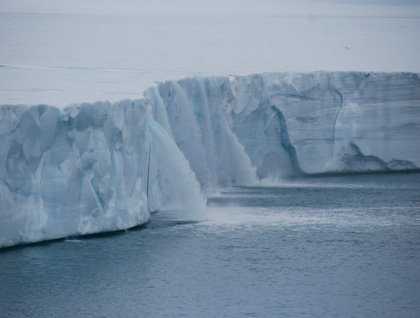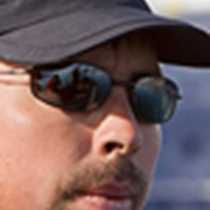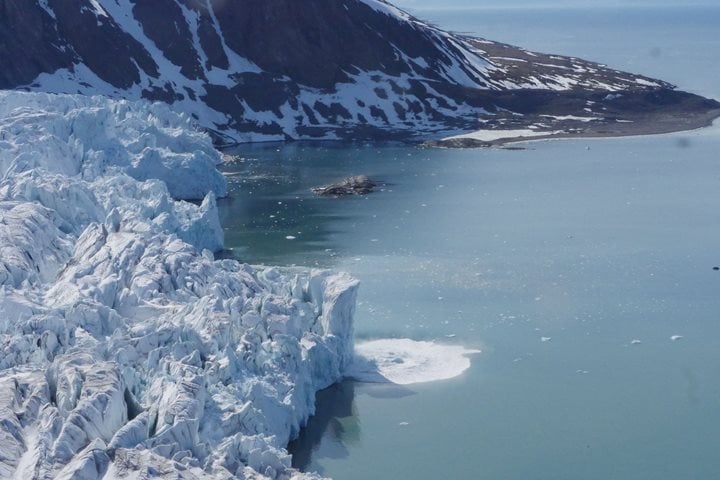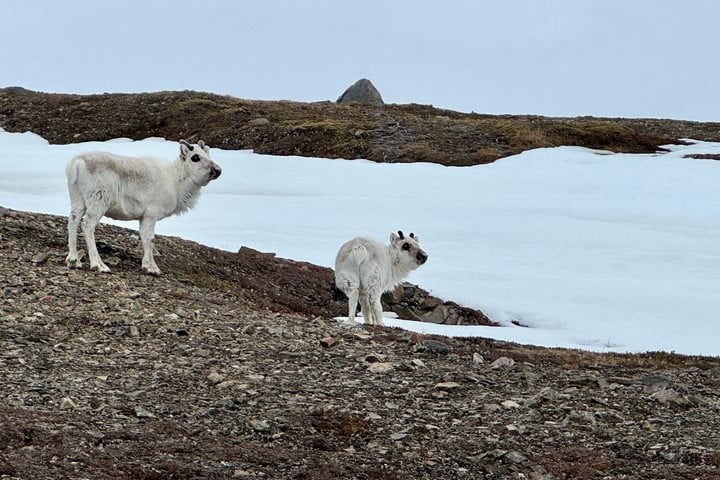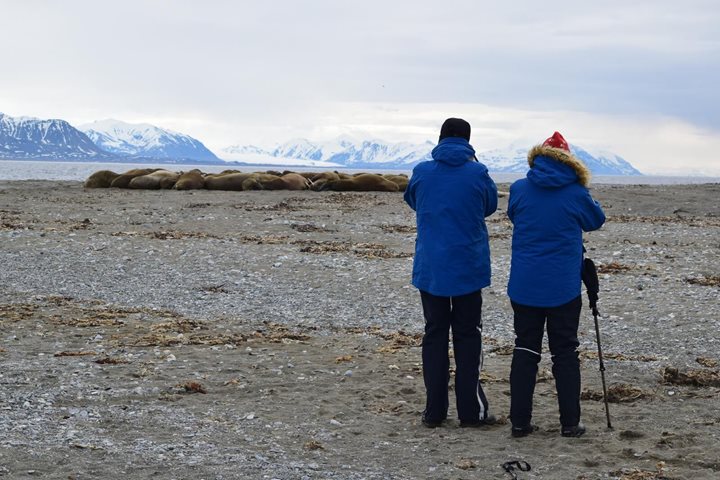Due to the amount of polar bears we saw last night after dinner, quite a few of us chose to take a leisurely approach to this morning’s breakfast. We awoke to a foggy morning, which transitioned between fog and somewhat clear throughout the day. As we cruised north into Hinlopen Strait we scanned for wildlife and the opportunity for a landing.
During the expeditions we had a great talk from Casey Anderson about his great and wild experiences with animals. It was truly quite inspiring to hear how he is been able to interact with animals. During Casey’s talk the fog lifted and we started preparing for a hike at a new and promising place that we had never visited before. As the talk ended, the fog descended, and we had to change plans again – to plan C.
Instead of waiting for the fog to lift, we set our course north for the third largest icecap in the world (next to Antarctica and Greenland). Austfonna extends to over 8,120 km, and covers over 50% of the island of Nordaustlandet. A major part of the glacier is grounded, so it is no longer a tidal glacier as it appears to be seen from the ship. The thickness of the ice cap is up to 565 m deep, with an average thickness of about 300 meters.
Austfonna is retreating as well as most other glaciers in Svalbard. The average retreat is tens of meters per year, while parts of the icecap are retreating up to 120m per year. Approaching the 100+mile long face this was visible as we navigated through and around a number of icebergs large and small! It has warmed up enough in the last week where melt water rivers fed from lakes in the middle of the icecap flow down the surface and emerge as 20+ meter tall falls off the face. Multiple waterfalls emerged from the face as we cruised along the impressive wall of ice!
After dinner without fail our expedition leader extraordinaire announced but another sighting of the great white bear, and by the end of the evening we saw 10 polar bears on some remaining fast ice, all within two hours!

